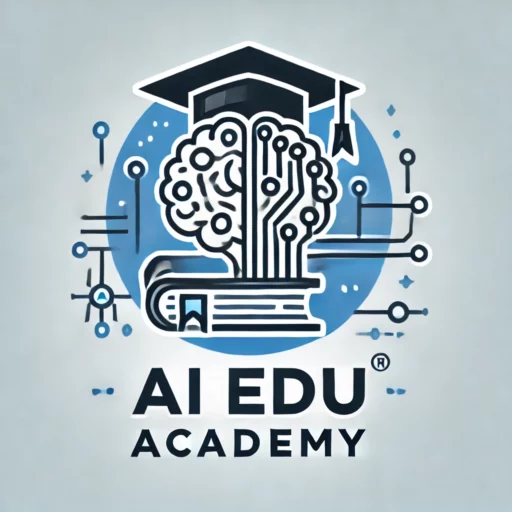Introduction to AI Software in Data Science
Artificial intelligence (AI) software is no longer just a cool trend—it’s the heartbeat of modern data science. If you’re diving into data-driven decision-making or predictive analytics, the right tools can make or break your workflow. But with so many platforms out there, how do you know which AI software is truly essential?
Whether you’re new to the game or looking to level up, let’s break down the five must-know AI tools that can supercharge your work as a data scientist.
Why AI Software Is Critical for Data Scientists
Automation and Efficiency
Imagine trying to sort through millions of rows of data manually. Yeah—no thanks. AI software automates much of the grunt work like data cleaning, feature engineering, and model training, giving you more time to focus on insights.
Handling Big Data Challenges
Today’s data isn’t just big; it’s massive. With AI tools, you get the horsepower to process, analyze, and draw insights from huge datasets that traditional tools can’t handle efficiently.
Criteria for Selecting AI Tools
Before we dive into the top five, it’s good to know how to pick the right tool.
Usability and Learning Curve
Some tools are beginner-friendly with graphical interfaces, while others require deep programming knowledge.
Integration with Popular Data Science Languages
Does the software play well with Python, R, or Java? The best ones do.
Community Support and Documentation
Open-source tools with vibrant communities usually have plenty of tutorials, plugins, and expert advice to lean on.
1. TensorFlow: The Powerhouse of Deep Learning
Overview of TensorFlow
Developed by Google, TensorFlow is a free, open-source framework that’s become a standard for building and deploying machine learning models, especially deep learning.
Key Features
- Scalable from mobile devices to large clusters of GPUs
- Compatible with Python and JavaScript
- TensorBoard for easy visualization
Best Use Cases
TensorFlow is ideal for image recognition, natural language processing (NLP), and recommendation systems.
Internal Link Opportunity: Want to learn the basics first? Visit AI Learning Basics to get started.
2. PyTorch: Flexibility for Research and Production
Why Data Scientists Love PyTorch
Built by Facebook’s AI Research lab, PyTorch is another open-source favorite. What sets it apart is its ease of use and dynamic computational graphs.
Dynamic Computational Graphs
You can build neural networks on the fly, perfect for research and debugging.
Ecosystem and Extensions
PyTorch supports TorchVision, TorchText, and Lightning, making it robust for everything from text analysis to GANs.
Semantic Tag Match: Explore more about AI Development with PyTorch and other leading tools.
3. RapidMiner: Drag-and-Drop AI Platform
Designed for Non-Coders
Not a Python wizard? No problem. RapidMiner gives you a visual interface to perform complex analytics tasks without writing a single line of code.
Visual Workflow Design
Build your model pipelines by dragging and dropping.
Prebuilt Machine Learning Models
Use templates and pre-trained models for tasks like sentiment analysis or customer churn prediction.
Want to keep up with tools like this? Check out the latest AI Tools & Software.

4. KNIME: Analytics Platform That Scales
Modular, Scalable, and Free
KNIME is a Swiss Army knife for analytics. It’s open-source and supports everything from data blending to predictive modeling.
Integration with Python, R, and More
KNIME integrates seamlessly with Python and R, making it perfect for hybrid workflows.
Ideal Scenarios
Great for fraud detection, supply chain optimization, and customer segmentation.
Looking to boost your AI career? Discover more in Career in AI.
5. H2O.ai: Open Source with Enterprise Muscle
AutoML and Explainable AI Tools
H2O.ai isn’t just another machine learning tool. It automates the entire model-building process with H2O AutoML and offers explainability through SHAP values and partial dependence plots.
Use in Real-World Applications
Financial institutions and healthcare providers use H2O for risk modeling, diagnostics, and more.
Why Enterprises Adopt It
It’s fast, scalable, and supports multiple languages including Python, R, and Java.
Curious about certifications to learn H2O.ai? Browse AI Courses & Certifications.
Emerging AI Software to Watch
While these five tools are must-knows, here are a couple of rising stars you should keep on your radar.
Google Vertex AI
An integrated platform for building, deploying, and scaling ML models—especially great for end-to-end workflows.
IBM Watson Studio
A powerhouse for enterprise AI, it offers visual modeling tools, AutoAI, and strong data governance.
Stay on top of trends: Read more on AI in Education Trends.
Tips for Mastering These AI Tools
Practice on Real Projects
Get your hands dirty. Practice is the best way to learn. Kaggle competitions are a great place to start.
Take Online AI Courses
There are plenty of online AI courses out there to help you master these tools, whether you’re a beginner or an expert.
Conclusion
AI software is the lifeblood of modern data science. Whether you’re training neural networks in TensorFlow, prototyping in PyTorch, or exploring data visually with KNIME or RapidMiner, mastering these tools is essential for staying relevant. Don’t forget to experiment, explore, and never stop learning.
Want to dive deeper into AI? Visit AIEDU Academy to explore everything from AI basics to AI careers.
FAQs
1. What’s the best AI software for beginners in data science?
RapidMiner and KNIME are great starting points due to their visual interfaces.
2. Is TensorFlow better than PyTorch?
Both are powerful. TensorFlow is preferred for production, while PyTorch excels in research flexibility.
3. Can I use these tools without coding skills?
Yes! Tools like RapidMiner and KNIME are designed for non-programmers.
4. How do I choose between open-source and enterprise AI software?
It depends on your project needs, scalability, and budget.
5. Which tool is best for AutoML?
H2O.ai leads the pack with its robust and easy-to-use AutoML capabilities.
6. Are these tools free?
Most have free versions. TensorFlow, PyTorch, KNIME, and H2O.ai are open-source. RapidMiner has a free tier with limitations.
7. Where can I learn more about these tools and get certified?
Visit AI Courses & Certifications to find top-notch learning paths and certifications.
